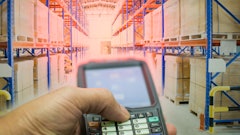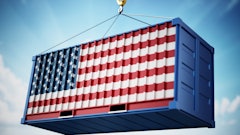
Transportation management systems (TMS) and warehouse management systems (WMS) are a heavy arm of modern logistics operations. Both systems streamline different aspects of the supply chain—TMS focusing on the planning, execution and optimization of the physical movement of goods, while WMS help manage warehousing operations such as inventory management and order fulfillment.
When it comes to food and beverage and cold storage, the intricacies are unique in the quest to keep perishables in good order. Understanding these technologies and their deployment options, including cloud-based versus on-premises solutions, and how they integrate for seamless shipping and warehousing is crucial for efficient management of supply chains.
The growth of emerging tech
The utilization of artificial intelligence (AI) and machine learning (ML) in these platforms is on a steady track toward revolution. Britain Pavlic, director of transportation at enVista, says in TMS, AI algorithms are analyzing historical data to offer demand forecasting and route optimization that mitigate risks of potential disruptions.
"For instance, a TMS might predict traffic patterns and suggest the most efficient routes, reducing delivery times and fuel consumption. This results in improved route planning and inventory management, leading to cost savings and increased operational efficiency,” says Pavlic.
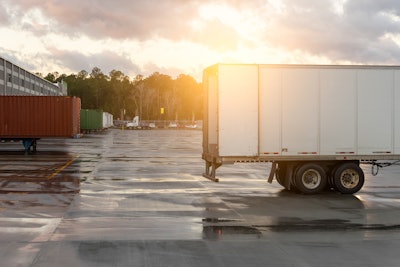 A truck awaits shipment at a warehouse.kirkam/stock.adobe.com
A truck awaits shipment at a warehouse.kirkam/stock.adobe.com
"Machine learning models can adjust pricing based on real-time data, such as fuel prices, demand fluctuations and capacity constraints. They also optimize load assignments by considering factors like vehicle capacity, delivery windows and shipment urgency. This results in enhanced revenue management, reduced empty miles and better utilization of resources," explains Pavlic.
Dean Marris, chief sustainability officer and EVP construction at EROAD, says it's important to note that the role of AI is not to replace human decision-making but to instead augment it, and harnessing the processing power of artificial intelligence to inform and augment human decision-making helps businesses successfully navigate the challenges of increasing complexity, stakeholder demands, evolving regulation and more.
Where WMS is concerned, AI and ML can enhance inventory accuracy by forecasting demand patterns, optimizing picking paths and sometimes automating replenishment processes. Craig Moore, VP of sales at Körber Supply Chain Software, explains today's optimizations have multiple benefits that keep warehouses running smoothly.
"In addition to enhancing the physical aspects of warehouse operations, WMS also boosts staff morale. These solutions benchmark employee performance, set realistic expectations for staff, and provide management with visibility into productivity. On the outbound side, WMS executes every aspect of fulfillment from retrieving the order receipt to picking, packing and providing the necessary documents for shipping. When modernizing WMS, there are multiple outbound benefits," explains Moore.
These technologies in both TMS and WMS facilitate proactive maintenance of equipment and vehicles, reducing downtime and operational disruptions. Still, much of this technology requires counterpart software to enhance the data and ability of these systems. For instance, the integration with robotics and mechatronics might offer smooth coordination to the actionable movement of product.
In fact, a recent study released by Interact Analysis shows revenue generated from automation-related software solutions growing at a faster rate than warehouse management software. Digital twin technology is one such example of "niceties" that could enhance smart warehouse considerations. Recently, inVia's digital twin solution incorporated advanced AI to help provide efficiency and accuracy in warehouse optimization. Through this technology, businesses could create a digital twin of their real-world warehouse and then simulate different scenarios to find the best layouts, workflows and automation solutions– yet another tool to work in conjunction with WMS for end-to-end fulfillment automation.
The nuance of options and integration
One question surrounding the software and technology in these systems is the distinction between cloud-based and on-premises solutions. Through the cloud, TMS and WMS are hosted on remote servers and accessed through the internet.
 Tech software connects warehouse inventory.Summit Art Creations/stock.adobe.com
Tech software connects warehouse inventory.Summit Art Creations/stock.adobe.com
In contrast and similarity, on-premises TMS and WMS are installed locally on a company’s own servers and maintained by their internal IT teams. This deployment model offers more control over the system and data, however, on-premises solutions come with higher initial costs, including hardware, software licenses and ongoing maintenance expenses.
“When choosing between cloud-based and on-prem, the best option depends on a company’s specific needs regarding deployment, cost, scalability, IT resources, access requirements, and security preferences. The differences between cloud vs. on-prem may seem likes pros vs. cons, but really it just requires a company determining what features are most important to them. A pro for one organization may be a con for another," says Pavlic.
Integrating TMS and WMS works to achieve end-to-end visibility in your supply chain. When integrated effectively, these systems enable seamless communication between warehousing and transportation, allowing for real-time data exchange and better decision-making.
Moore says implementing a WMS is a critical step toward creating an agile business that can overcome today’s warehouses challenges— from higher customer expectations to labor shortages; yet it is just as important that companies sustain and enhance their solution over time via regular system testing.
"As the business grows, systems and processes need to grow with it, so continuously auditing systems and identifying areas for improvement within processes shouldn’t be overlooked. While completely revamping the way a warehouse runs may be daunting, it is necessary. With a modernized WMS, your businesses will have the necessary tools to keep up with today’s ever-evolving customer demands," says Moore.
The first step in adopting a TMS, according to Pavlic, is to define clear objectives— and that's a great consideration for WMS and other technologies. Establishing specific goals helps ensure that the system’s capabilities align with your needs. This, Pavlic explains, helps avoid potential misalignment and maximizes the return on investment. With the right integration strategy and research on software of your choice, companies can cultivate more agile and responsive supply chains.

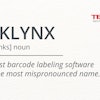












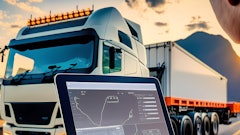



![Top Tech Startup Logo 2025 Vertical [color] (1)](https://img.foodlogistics.com/mindful/acbm/workspaces/default/uploads/2025/07/top-tech-startup-logo-2025-vertical-color-1.pZkBK95TLe.png?ar=16%3A9&auto=format%2Ccompress&bg=fff&fill-color=fff&fit=fill&h=135&q=70&w=240)
